What is average order value (AOV)?
In simple terms, average order value (AOV) refers to the average amount of money spent by a customer when they place an order on a website, mobile app, or in-store.
Average order value is considered one of the most important eCommerce metrics for online stores to be aware of. It is a key performance indicator that helps inform companies about:
- Customers’ purchasing habits/behavior
- Marketing and pricing strategies
- Advertising spend
- Store layout
Improving the average order value directly scales the profits and revenue growth upward.
Like many other metrics, it is possible to track Average Order Value for any period, but most businesses prefer to monitor the moving monthly average.
How to calculate average order value
AOV can be easily calculated by dividing total revenue by the number of orders during a given period.
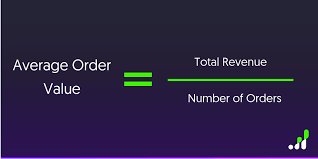
Let’s see an example:
A business generated revenue of Rs. 40,000 across 200 orders last month; the Average Order Value is:
Average Order Value (AOV) = Rs. 40,000 / 200 = Rs. 200
Importance of average order value
Having insight into the average order value offers a peek into customer behaviors and their spending patterns. By studying how users are spending on every order/product, it becomes easier to then organize marketing and pricing strategies to enhance the AOV.
Below are some of the ways that Average Order Value can impact business decisions:
- Buying patterns and trends: AOV increases awareness about the time of the year that may need more attention. In other words, which season/occasion most resonates with the highest value customers. The resultant AOV showcases the effectiveness of campaigns being held in different instances. An increase or decrease in AOV can provide a better understanding of the audience and help in optimizing the campaigns for future success.
- Conversion costs: The AOV should be at least 2 times higher than the customer acquisition cost or the conversion cost. If the conversion cost is higher than the AOV, it means a clear loss in revenue.
- Ad spending: It is important to keep a check on the business money spent on advertising and how it is translating to AOV. As mentioned above, if the spend is equal to or more than the AOV to acquire a customer, it is a loss in revenue. Think through:
- Product costs
- Ad costs
- Shipping costs
- Warehousing costs
The 3 most important e-commerce metrics: average order value, conversion rate, and revenue per visit
When we talk about average order value, conversion rate (CR) and revenue per visit (RPP) are also considered to assess performance and act as a lever for driving overall revenue growth.
Conversion rate (CR)
The conversion rate is the total number of visitors divided by the number of conversions made on a website or store. The higher the conversion rate, the higher will be the multiplier of the average order value for overall revenue.
Revenue per visit (RPV)
Where AOV refers to the value of each order, revenue per visitor refers to the value of each visitor to the website or store.
Revenue per visit = total of revenue/the total number of visits to the website.
A higher RPV indicates that the store or website is receiving more qualified traffic.
How to increase average order value
It is evident that average order value has a big impact on your results. However, there is still a common question to be answered – how can you increase your AOV? Let’s explore some of the useful tips to do so:
- Bundle products/create packages: To encourage customers to purchase more items, a good plan is to create product bundles that will cost less than if the same products were purchased individually. A great approach to this is to offer a product package that will create an all-in-one solution for the desired experience and eliminate the need for further research. Another benefit – multiple products sold in place of just one or two.
For example, Amazon offers bundled product recommendations, hence reducing cart abandonments and boosting sales.
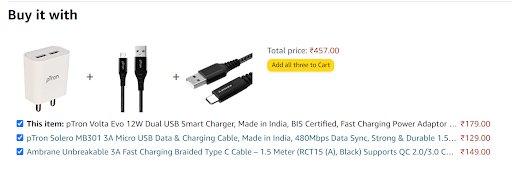
2. Upsell and Cross-sell: This is a tried and tested behavioral marketing tactic that nudges consumers to buy complementary (cross-sell) or upgraded (upsell) versions of products they already intend to buy. This greatly helps in improving the AOV.
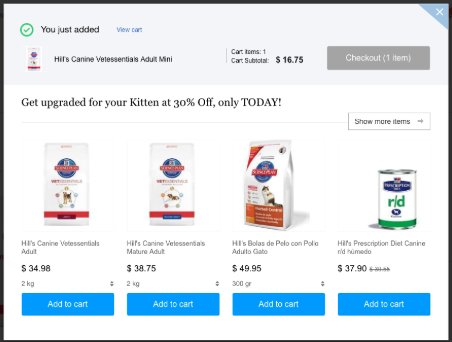
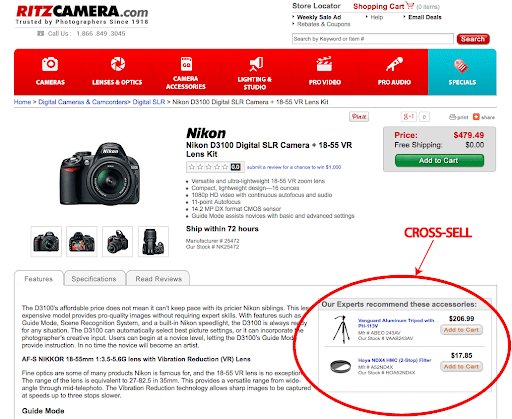
3. Offer discounts: Who on this planet doesn’t love discounts!! Offering irresistible discounts and promotions starting with the words “offer”, “discount”, “free”, etc. to customers is an excellent way to boost the AOV. A common way to do so is below:

By buying through these offers, users have the feeling that they have made the best deal of their life.
4. Create customer loyalty programs: Rewarding customers to shop consistently at your store works as a retention strategy that encourages a healthy relationship with customers bringing them back to your store always, hence, boosting AOV. A good example of this is, offering customers redeemable reward points on each purchase.
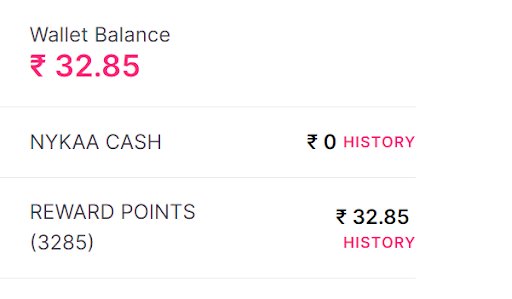
5. Provide product recommendations: Adding product recommendations to product pages or checkout pages often encourages customers to look beyond particular products. This helps in avoiding smaller carts, therefore, increasing AOV. Using phrases like “complete the look” or “customers also bought” can do wonders when providing suggestions to customers.
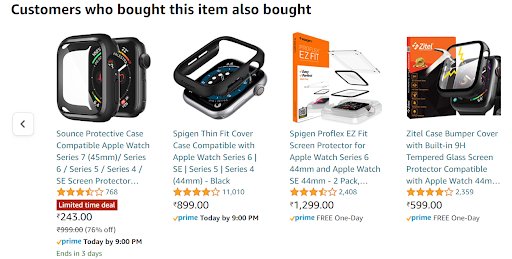
6. Offer free shipping and returns: No one wants to pay for shipping — and most of the times customers will avoid it at all costs — even if it means adding more items to their order. Offering conditional free shipping and returns is an excellent way to encourage customers to spend more, resulting in a boost in AOV.

7. Build social proof to raise AOV: Social proof is a great way for businesses to build credibility along with creating a sense of FOMO for customers. Actions and opinions of other shoppers, such as customer reviews and user-generated content, can significantly boost the AOV efforts.
How A/B testing helps to improve AOV
A/B testing is an excellent way to test all the above-mentioned strategies to see which ones are best for a business. A/B testing helps to put aside personal opinions and use accurate data to decide because, as we already know, the customer is the best usability and design expert. VWO helps you A/B test quickly and easily. Take a free trial to find out how.
The best part of the average order value is that the main focus is on visitors who already want to buy. They have high intent to buy, and may even have items in their shopping carts. All that needs to be done is to help them discover and purchase other items relevant to them.










